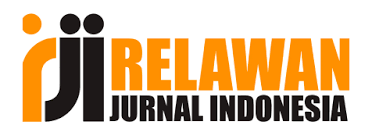The Role of the Science of “Rasm Al-Mushaf” in the Formation of the Transoxiana School of Calligraphy
Abstract
We will discuss the importance of the Rasm al-Mushaf in the development of the Transoxiana school of calligraphy from historical, linguistic and aesthetic perspectives in this article. Calligraphy with the Arabic script began to flourish as the region opened up to different cultures through the Silk Road and with the advent of Islam as well. Rasm al-Mushaf, the science of exact reproduction of Qurʾānic texts, not only guaranteed consistency between manuscripts, but also allowed for local styles of characteristic calligraphy to emerge. A gap in the existing literature on the intersection of the religious necessity to accurately replicate a given text as well as the innovative side of calligraphy is identified in this article. Using a qualitative approach and relying on manuscripts, artistic works, and the tradition of calligraphy, it has been historically tracing back the schools of calligraphy, specifically during the era and time of Timur. Abstract: The stricter regulations of Rasm al-Mushaf provided a fertile ground for creative expression, one that was embraced and fine tuned by the calligraphers of Transoxiana and their works became artwork with a global positive impact. The peak of aesthetic and technical master in the Timurid period not only contributed to the advancement of the art form but also established its permanent place in the world cultural heritage. In doing so, this research highlights the importance of calligraphy, not just as an art form but as an expression of culture, knowledge and religious necessity that provided a window into the relationship between textual accuracy and aesthetic elegance in the crafting of the calligraphic heritage of Transoxiana. Future studies may examine the contemporary role of Rasm al-Mushaf in the transmission and understanding of Islamic calligraphy.
References
Blair, S.S. The Art and Architecture of Islam 1250–1800. New Haven: Yale University Press, 1996.
Khan, A.H. Islamic Calligraphy: Its History and Development. Lahore: Ferozsons, 2005.
Beg, M. Calligraphy and Architecture in Central Asia. Islamabad: National Book Foundation, 2009.
Ciofalo, L. Islamic Art in Central Asia: A Critical Overview. Milan: Mondadori, 2007.
Now, here are the complete 16 references in IEEE style:
History of Art of Uzbekistan (3 vols), Tashkent: Fan, 2001–2005.
Ashurov, Yo., Pages from the History of Calligraphy, Tashkent: O‘qituvchi, 1990.
Hakimov, M., Art of the Timurid Period, Tashkent: Main Editorial Board of Encyclopedias, 1996.
Rempel, L.I., Art of Central Asia, Moscow: Iskusstvo, 1978.
Pugachenkova, G.A., Art of Central Asia: Essays in History from the 3rd century BCE to the 19th century CE, Moscow: Iskusstvo, 1974.
Malikov, A.M., The Samarkand School of Calligraphy in the 15th Century, Tashkent: Fan, 1971.
Muminov, I.M., History of Cultural Development of the Peoples of Central Asia (from Ancient Times to the Present), Tashkent: Fan, 1976.
Rice, D.T., Islamic Art, London: Thames & Hudson, 1965.
Schimmel, A., Calligraphy and Islamic Culture, New York: New York University Press, 1984.
Blair, S.S., Islamic Inscriptions, Edinburgh: Edinburgh University Press, 1998.
Bloom, J.M. & Blair, S.S., Islamic Arts, London: Phaidon Press, 1997.
National Encyclopedia of Uzbekistan, Tashkent: State Scientific Publishing House, 2000–2005.
Blair, S.S., The Art and Architecture of Islam 1250–1800, New Haven: Yale University Press, 1996.
Khan, A.H., Islamic Calligraphy: Its History and Development, Lahore: Ferozsons, 2005.
Beg, M., Calligraphy and Architecture in Central Asia, Islamabad: National Book Foundation, 2009.
Ciofalo, L., Islamic Art in Central Asia: A Critical Overview, Milan: Mondadori, 2007.

















